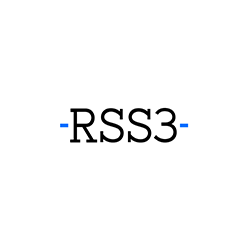What Does UMA Stand For in the Crypto World?

What Does UMA Stand For in Crypto?
In the rapidly evolving world of cryptocurrencies and Blockchain technology, investors and enthusiasts are continually seeking out the next big thing. One term that has recently garnered attention is UMA. But what does UMA stand for in the realm of crypto, and why should you care? This article delves into the universe of UMA, exploring its significance, utility, and potential impact on decentralized finance (DeFi).
Understanding UMA: Universal Market Access
UMA stands for Universal Market Access, a decentralized protocol that aims to power financial innovation on the blockchain. Unlike traditional financial markets, which are often steeped in bureaucracy and centralized control, UMA provides a platform for creating smart contracts that can enforce themselves, democratizing the access to market and financial products.
The Core Idea Behind UMA
At its core, UMA is all about creating financial markets that anyone can access without the need for third-party intermediaries. It is a protocol built on the Ethereum blockchain, which allows users to create synthetic tokens that represent real-world assets or financial instruments.
Key Features of UMA:
- Self-Enforcing Smart Contracts: UMA smart contracts are designed to be self-enforcing through economic incentives, reducing the need for legal recourse.
- Synthetic Assets Creation: Users can create synthetic tokens to mimic the value of an underlying asset, such as a stock or commodity.
- Decentralized and Permissionless: True to the spirit of blockchain, UMA does not require permission or centralized control to operate.
The Role of UMA in DeFi
Universal Market Access is instrumental in the broader framework of decentralized finance, or DeFi. DeFi represents a shift from traditional, centralized banking services to peer-to-peer finance enabled by blockchain technology. Here’s how UMA fits into this expanding ecosystem:
- Expanding Access to Financial Instruments: UMA’s technology allows for the creation of synthetic assets that can track the price of any financial product. This is particularly useful for offering access to assets and financial instruments globally, especially in regions where traditional stock market access is limited.
- Lower Barriers to Entry: By removing intermediaries, UMA ensures that anyone with an internet connection can potentially 'trade' in global markets.
- Innovative Finance Solutions: By using UMA, developers can design financial products that were previously unimaginable, broadening the landscape of investment opportunities.
How UMA Works
Understanding how UMA works requires a closer look at its two main components: Synthetic Tokens and the Oracle.
Synthetic Tokens
The main product of UMA is the creation of synthetic tokens. These are ERC-20 tokens that represent the price of an external asset. For instance, you could create a token that tracks the price of gold or the SP 500 index. These tokens are purely financial instruments with no inherent value other than what UMA's smart contract defines.
UMA's Optimistic Oracle
The optimistic oracle system of UMA is unique. It resolves price and data disputes off-chain, only contacting the blockchain if there is a discrepancy that requires resolution. This model not only reduces the cost of using oracles but also enhances security and optimizes performance.
Potential Challenges for UMA
While UMA has revolutionary potential, it is not without its challenges. Here are a few obstacles it might need to overcome:
- Regulatory Compliance: As with many crypto projects, regulatory issues can arise, particularly regarding the legality of synthetic assets.
- Market Adoption: UMA relies on adoption by users and developers to grow its ecosystem, which requires education and willingness to innovate.
- Security Concerns: Ensuring that smart contracts are secure and free from exploits is a critical concern for UMA and its users.
UMA's Bright Future
Despite the potential challenges, the prospects for UMA are promising. As DeFi continues to disrupt traditional banking and finance, UMA stands out as a powerful tool for innovation and inclusion.
Why Should You Care About UMA?
Investors and developers have a unique opportunity with UMA to redefine financial boundaries. By embracing this protocol, stakeholders are not only investing in a potentially lucrative asset but also in a paradigm shift towards a more open and accessible market.
UMA continues to champion the ethos of democratization in finance, creating a fair and accessible space for global participants. Whether you are an investor seeking returns or a developer looking to build the next generation of financial products, understanding UMA will keep you ahead of the curve in the ever-transforming crypto landscape.
As digital finance becomes increasingly woven into the fabric of everyday life, tools like UMA will likely become central to this evolution. Keep an eye on Universal Market Access, as it might hold the keys to a new frontier in economic participation and innovation.
Latest articles
See more






















